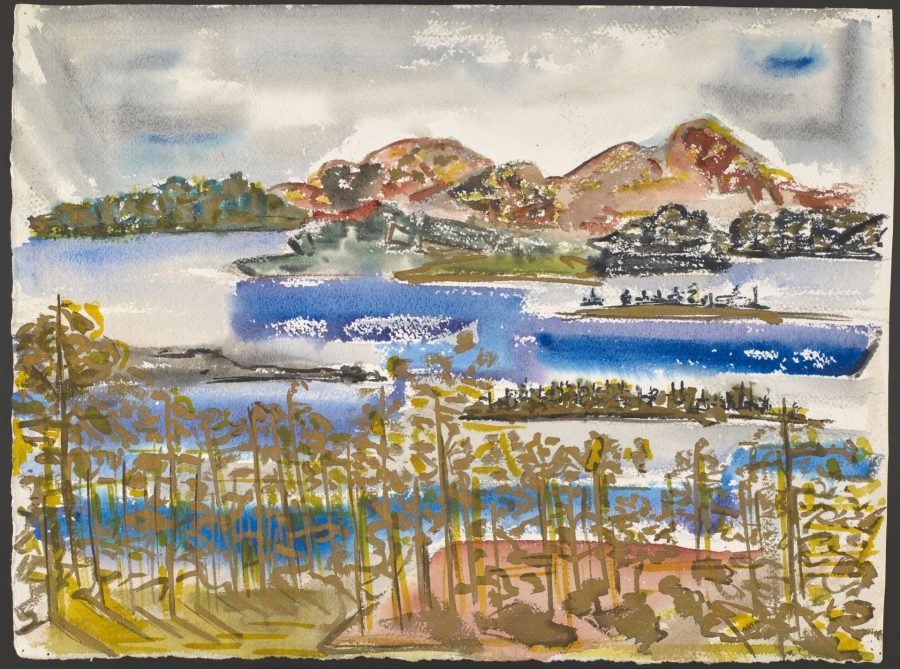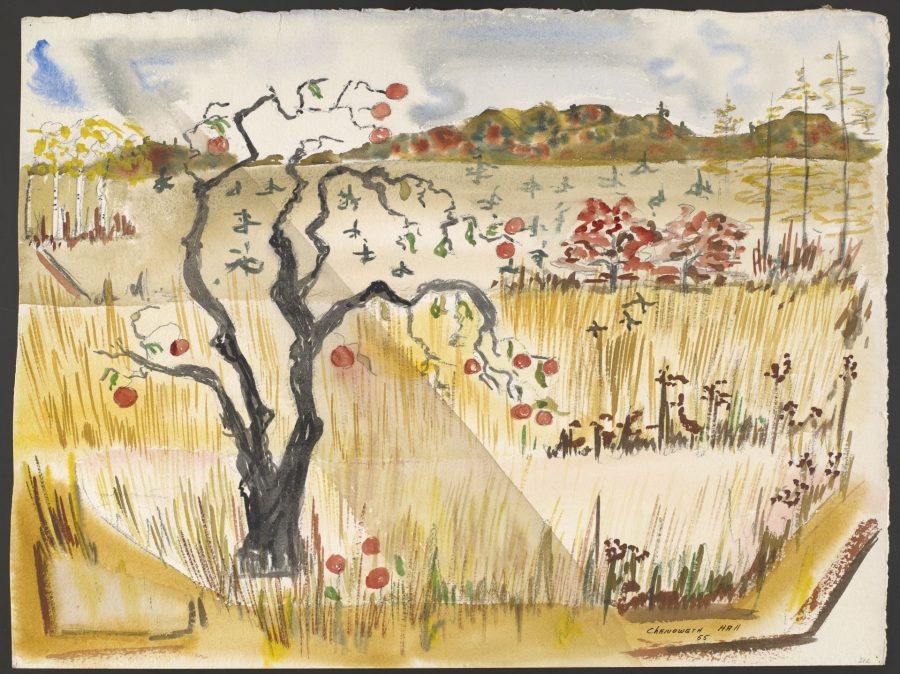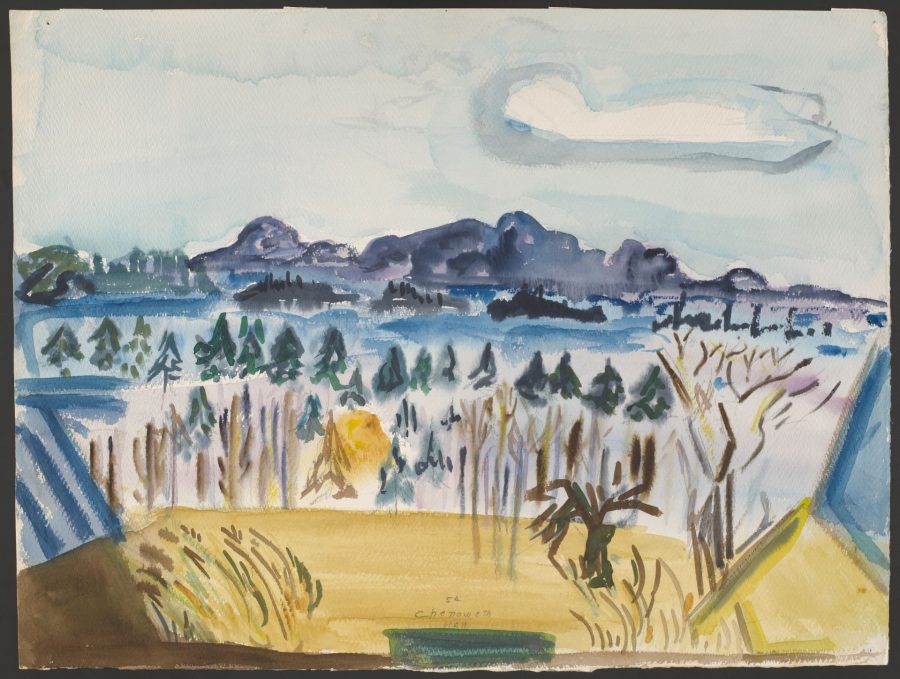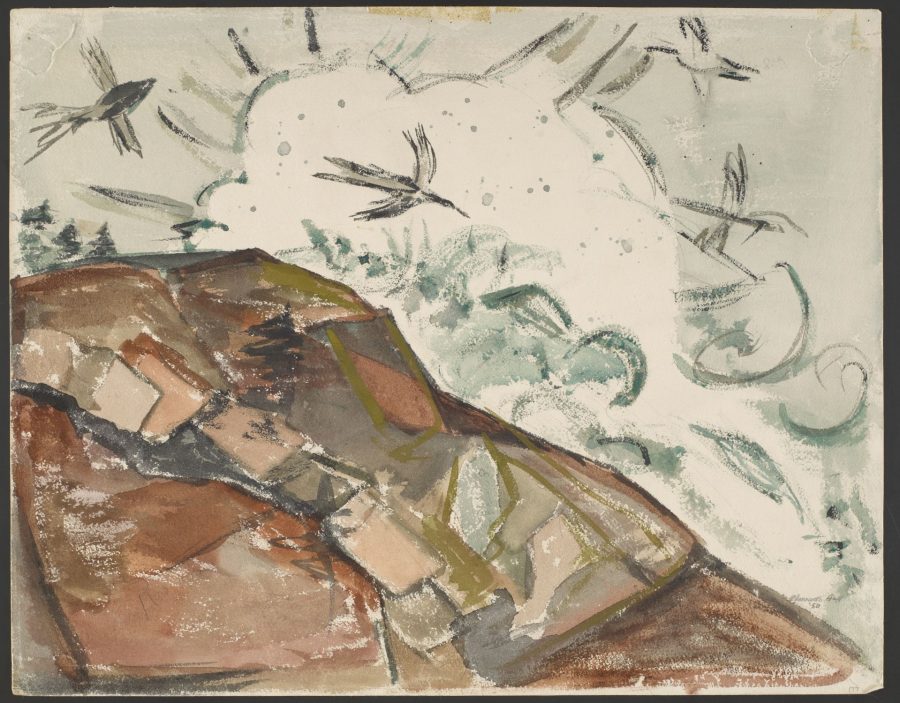Chenoweth Hall (1908-1999)
Chenoweth Hall was a musician, sculptor, writer, painter, and art professor who has over a dozen pieces in Bates College Museum of Art’s collection. Hall was truly a woman of the arts, having played violin in professional groups, teaching art at University of Maine- Machias, publishing a novel, and writing an opera/ballet. Throughout her life, Hall performed with the Brooklyn Symphony Orchestra, Rossano String Quartet, and later in life the Brunswick Orchestra in Georgia. She wrote a novel, The Crow in the Spruce, which was published by Houghton Mifflin in 1946. In the 1950s, Hall wrote the ballet and opera, The Stone, which was inspired by the Stone of Scone being taken from Westminster Abbey by four students from the University of Glasgow in 1950. In 1968 Hall became an artist in residence and then a professor at the University of Maine, Machias, where she taught for ten years.
When Hall moved to Maine in the early 1940s, she embraced Maine life in the coastal town, Prospect, a locale which is depicted in several of her works in the museum’s collection. The Museum received some of her works because of her friendship with the artist Marsden Hartley, who had a love for Bates College’s intellectual and spiritual kinship.

Chenoweth Hall, October on the Lake, watercolor on paper, Bates College Museum of Art, gift of Miriam Colwell for Chenoweth Hall 
Chenoweth Hall, Harvest Spectrum, 1955, watercolor on paper, Bates College Museum of Art, gift of Chenoweth Hall 
Chenoweth Hall, Mt. Desert Hills from Sullivian, 1954, watercolor, gift of Chenoweth Hall 
Chenoweth Hall, Storm at Schoodic, 1950, watercolor on paper, Bates College Museum of Art, gift of Miriam Colwell
These are my four favorite paintings of Hall’s that are in the collection. They are all painted in watercolor, a difficult medium to master. October on the Lake is the most eye catching to me. The color palette works nicely together and I love how there are contrasting colors, but their vibrancy is in a similar range. The brushwork is eloquent, but still gives texture and life to the work. Also, The composition pleases my eye and makes me feel as I am in the painting, not just looking at it. In many of Hall’s works, the more that one looks at it, the better this painting gets. There are little details and complexity just waiting to be found, such as the tree covered hill in the background of Harvest Spectrum. The variance of color and brushwork is amazing, but if one were to just take a quick glance at this watercolor they might miss it. Harvest Spectrum showcases something that Maine is known for, its autumn. What I like about Harvest Spectrum is that it focuses on one tree and the prominence of apples as one of the state’s important crops. Mt. Desert Hills from Sullivan is also a wonderful work. The purple and blues play great with the greens and yellows. I really enjoy this piece because it reminds me of the mountains in Tennessee as well as the ones I have seen in Maine. Lastly, Storm at Schoodic exhibits some of the rock formations and wildlife typical of Maine’s Coast. This painting is action packed and feels as if it is alive. These four watercolors do a wonderful job capturing the essence of Maine’s coastal landscapes.
Chenoweth Hall and I are both born in states other than Maine. She hails Indiana and I from Tennessee. Over my two years in college, I’ve made Maine my home like Hall did when she moved to Maine to focus on her art. Now, I care a lot for this state and can see its likeness in Hall’s watercolors.
Chenoweth Hall has a modernist style that puts her in the same camp as many of her contemporaries, but her artwork is unique because of her brushwork, palette, and composition. Hall’s paintings are both youthful and encapsulating of the full scene. Her art is mystical, yet realistic. This ties in with Maine, a state with such beauty that feels like it could have been imagined. The dramatic coasts, farmlands, and hills seen in Hall’s paintings do Maine justice. Some of her paintings were even featured in Bates Art Museum of Art educational outreach program, Rollin’ to Olin, which was given to all of the fourth-grade students in Lewiston and focused on Maine artists.
Sources:
https://www.maine.gov/msl/maine/writdisplay.shtml?id=94750
https://museum.bates.edu/objects-1/thumbnailsrecords=20&query=mfs%20any%20%22Chenoweth%22
http://www.courthousegallery.com/?section=hall_chenoweth
Helen Pandey ’22
Art & Visual Culture Major with a double minor in Education and History